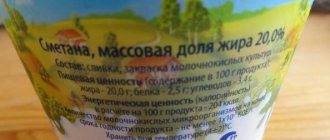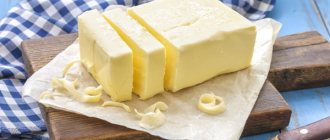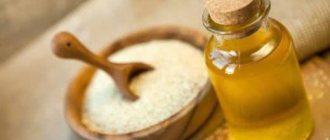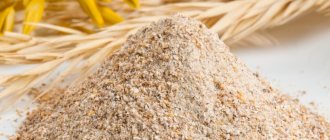Features of goat cheese
As the name suggests, this cheese is made from goat's milk. Unlike traditional cow's milk, it has a number of features:
- Has less calories.
- It has a high concentration of lactic acid bacteria, being essentially “solid yogurt”. Most of these bacteria are predators, making the product a natural antibiotic.
- During the production process, virtually all of the lactose and other irritating substances contained in milk are fermented. This makes cheese not only a hypoallergenic product, but also makes it possible for people with lactose intolerance to consume it.
- The digestibility of this product is better than that of cow's, since its lipids are better processed by humans.
- The content of microelements (in particular, calcium) in this type of cheese is higher than in cow's cheese.
The listed beneficial properties make cheese made from goat's milk more attractive than cow's milk. However, there are objective reasons why it is not very common at present.
The first is the high price of the product, since a lot of milk is required for its production, and a goat, unlike a cow, is a small animal. The second is a specific smell that many people don’t like.
Summarize
- Goat cheese is a nutritious dairy product that is rich in vitamins, minerals and healthy fats.
- Eating goat cheese can benefit your health in several ways, including increasing satiety and reducing inflammation.
- Additionally, its protein structure and lower lactose levels make it a better choice for people intolerant to cow's milk.
- Having this versatile ingredient in your kitchen can ensure that you always have a unique and delicious ingredient to include in sweet and savory dishes.
Tags: Cheese
- Related Posts
- Raw milk: do the benefits outweigh the risks?
- How to check whether an egg is spoiled or not?
- How long and how can boiled eggs be stored (in shell and without)
« Previous entry
Composition and calorie content of goat cheese
It is quite difficult to estimate the quantitative composition of the product; in addition, it varies significantly depending on the manufacturing technology. Therefore, we can only talk about what substances are included in its composition, without indicating their concentration.
The vitamin composition of the product is as follows:
- vitamins A and PP;
- B vitamins;
- ascorbic acid;
- vitamins E and D.
It includes the following microelements:
- calcium (one of the highest concentrations in animal products);
- potassium;
- magnesium;
- phosphorus;
- iron;
- zinc.
The nutritional value of the product also depends significantly on the variety. The averages are approximately as follows:
- proteins – 29%
- fat – 67%
- carbohydrates – 1%.
The average caloric value of goat cheese per 100 grams is 290 kcal.
In practice, the calorie content of homemade goat cheese may differ from the given value. This depends on the fat content of the milk used. In the literature, figures range from 250 kcal to 320 kcal per 100 g of product.
What is goat cheese
Cheeses of this class are made from fresh goat milk according to a traditional recipe that involves the addition of spices. After the milk mixture has soured and curdled, the whey is drained, and the resulting curd is carefully squeezed and pressed. After this, the compressed mass is cooled and, if necessary, shaped.
Please note: unlike cow's milk, the color of the goat's product is pure white .
Since this variety does not cause any allergic reactions, they are allowed to feed even infants over eight months of age.
Products of this type are not too high in calories; on average it is 290 Kcal per conventional unit of weight (100 grams). Therefore, they are often used as an easy fuel during exhausting diets.
This delicacy also has a low percentage of fat and can be produced in hard, soft or curd form.
Benefits of goat cheese
The benefits of goat cheese for the human body are enormous. Thanks to the unique combination of its constituent substances, goat's milk cheese has a lot of beneficial properties and has a beneficial effect on almost all body systems.
It normalizes the functioning of the skeletal system and strengthens it. This is possible due to the high calcium content in the product.
The product improves digestion. The beneficial bacteria it contains promote faster digestion of food.
The beneficial properties of the product are also manifested in the prevention of atherosclerosis. The substances it contains help dissolve cholesterol plaques. This is especially noticeable in the blood vessels of the brain.
The product has a positive effect on the circulatory system as a whole. It is recommended for people suffering from hypertension, coronary heart disease and tachycardia. The beneficial properties of cheese make it indispensable for arrhythmia.
The beneficial properties of cheese can eliminate many problems of the genitourinary system.
The active substances contained in the product accelerate metabolism and promote fat burning in the body. The fats included in the product, due to their structure, are broken down very quickly and do not lead to excess weight gain. The interaction of these beneficial properties makes goat milk cheese one of the recommended products for weight loss.
The product will also be useful for the skin, hair and nails. Due to its high vitamin D content, the product is used in a large number of nourishing masks for the body and hair.
For women and men
In the female body, the beneficial properties of cheese are manifested in the reduction of menstrual pain. It is able to eliminate inflammatory processes in the genitourinary system. The beneficial bacteria contained in it help suppress the development of candidiasis and other infectious diseases.
The consumption of cheese is recommended for pregnant and lactating women, since it not only replenishes the amount of calcium in the body, but also promotes the proper development of the fetus in the womb.
For men, cheese will be useful primarily due to the high concentration of phosphorus and proteins, which provides nutrition to the muscular system. No less important are the beneficial properties of the product in strengthening the functions of the male reproductive system.
For the elderly
Goat's milk cheese is good for older people because its consumption prevents the destruction of bone tissue.
For children
The main use of this product in baby food is to provide the growing body with a sufficient amount of calcium and phosphorus. These beneficial substances will allow the skeletal and muscular systems of the growing body to properly form.
The product has no contraindications because it is hypoallergenic and can be eaten by children from 18 months.
Useful properties of goat cheese
Thanks to different additives and cooking technologies, cheese has different tastes. The benefits and harms of goat cheese are very different from products made from cow's milk.
This is primarily observed in less fat, calories, and cholesterol. So this delicacy will be a good choice for those who are losing weight or simply watching their weight.
The benefit of such cheese is also that it is much easier to digest compared to cow cheese. Due to the similarity of fat cells to human ones, it does not create a burden on the digestive system.
This fermented milk product contains more than a hundred species of bacteria that fight pathogenic microbes and viruses. Due to its healing properties, it is actively used in folk medicine.
Eating this delicacy will be a good prevention of colon cancer, normalize blood pressure, as well as the functioning of the nervous system.
Due to its low sodium and cholesterol content, it is recommended for consumption by people who suffer from heart disease and are also prone to diabetes.
This type of cheese is quickly absorbed in the body, bringing significant benefits:
- helps speed up the metabolic process;
- burns fat cells;
- helps solve problems of the genitourinary system;
- strengthens the immune system;
- reduces pain during menstruation.
An important advantage is that goat cheese is a hypoallergenic product. This means that absolutely everyone, even allergy sufferers, can include it in their diet.
Nutritionists have systematized all knowledge about goat cheese and compared its positive and negative aspects. We carefully took into account its benefits and harms for children, pregnant women, and the elderly. Experts have concluded that by regularly consuming this product, you can expect the following results:
- the low content of fatty acids allows you to feel full without feeling hungry for a long time;
- helps lower blood pressure;
- positive effect on bone tissue, water balance, blood composition;
- helps normalize heart rate and strengthen the walls of blood vessels;
- cleanses the intestines, restores the strength of the immune system;
- helps activate metabolism;
- reduces the level of pain during menopause;
- reduces the risk of developing candidiasis and vaginitis;
- serves as a prevention of osteoporosis;
- eliminates unpleasant odor in the mouth, fights caries.
Homemade goat cheese recipe
Making this cheese at home is very simple. This, one might say, is one of the oldest recipes for dairy products of our civilization. For this you will need: 2 liters of goat milk, 1 lemon, a pinch of salt.
Sequencing:
- Salt is added to the milk and heated to a temperature of +90° (until bubbles appear), however, do not bring it to a boil.
- Lemon juice is added to the heated milk, squeezing it drop by drop from the cut lemon. The drop frequency is once every 5 seconds. After about 1.5-2 minutes. Serum will begin to secrete.
- Place gauze or a wide bandage in a sieve or colander. The resulting dishes are placed over a clean pan or any container. The whey is poured into a sieve.
- After half an hour, a piece of the correct shape is formed from the curd mass, compacted and placed in the refrigerator.
You can try it in a couple of hours, but it’s better to wait about a day. The yield of the final product from 2 liters of milk is about 270-300 g. If you want to get a porous product, add 2-3 g of soda to the whey before pouring it onto a sieve.
We recommend reading: Baking soda: beneficial properties, uses, how to take
Attention! Soda should be added after the milk has curdled. Otherwise, it will neutralize citric acid, and milk curdling will occur much later, which will lead to a deterioration in the taste of the cheese.
The use of goat cheese in cooking and cosmetology
The product is widely used in cooking. It is used as an independent dish - as an appetizer for wine or dessert, or as a component of more complex dishes. Most often it is used in salads or casseroles.
In cosmetology, liquid products (goat milk and cream and sour cream obtained from it) are more often used, however, cheese is also used. Cheese masks have a tonic effect on the skin. They are suitable for all skin types. The nutritional effect of such masks is superior to similar masks made from cow cheese.
Application
Goat cheese is used in the preparation of various dishes. It is used for filling pies and pizza. Goat cheese is added to sauces and soups and is an excellent addition to hot meat dishes. Goat cheese is also used as an independent snack; it goes well with fruits, nuts and honey. It is used for sandwiches and various fresh salads. Goat cheese is a very tasty, healthy and nutritious product; it is very popular all over the world.
There is a huge variety of goat cheese varieties. The lightest and whitest product is young goat cheese. If the product is more mature, it has a more tart taste and aroma.
Market Analytics
- COVID-19 is changing the rules of the game in the cosmetics market
- Beauty of the future: cosmetic innovations 2020
- New ingredients are the driving force of the cosmetics industry
Convenient search for beauty salons on our website
Beauty salons in Moscow Beauty salons in St. Petersburg Beauty salons in Ekaterinburg Beauty salons in Novosibirsk
Latest blog posts on our website
- Naturecream / Geranium (Pelargonium) oil for skin health and beauty
- Prostye-sovety / Save on a beauty salon: procedures that can be done at home
- Naturecream / Growth Factor - brings back youth?
- Oksana-Lezina / 3 effective abdominal exercises from a fitness instructor for beginners
- Prostye-sovety / Making perfect curls at home
- Prostye-sovety / Which hair removal method to choose
- Naturecream / Wrinkles Puppets
- Naturecream / PEPHA-TIGHT - instant skin lifting
- Naturecream / Blue light - a danger to the skin
- Naturecream / Cocoa Butter – A treat for the skin
Latest forum topics on our website
- Mrs._Smith / Badly sunburned! What to do?((
- Ice / Is it necessary to combine fitness classes with a diet?
- Antonova / What can be used for hair loss?
- Radio operatorKat / Who was on a protein diet?
- Suzanna / Mesotherapy on the face
Other articles in this section
| Soy milk Soy milk is a drink of plant origin, extracted from soybeans. Its taste is pleasant, slightly sweet. This milk appeared, as many sources testify, in China many centuries ago. Soy milk is now widely popular among people around the world. He is especially revered in America and in the countries of southern Europe. And in Japan, this product has been replacing milk obtained from animals for many years. |
| Rougette cheese Rougette cheese is a cheese with an attractive and refined taste. Bavaria is considered the birthplace of this cheese. The basis of the product is cow's milk and cream. Its distinctive feature is the paprika-based crust, which turns red. And the characteristic ammonia taste, washing the cheese rind five times and an equally noticeable piquant smell distinguishes it from other soft varieties. |
| Curd whey Curd whey is a healthy dairy product, which is a greenish, yellowish or whitish liquid with a sour taste, obtained as a result of milk coagulation during the process of souring it. |
| Lambert cheese The production of a new type of cheese began in Altai many decades ago. They named him Lambert. This cheese belongs to the hard rennet varieties and has a yellow color, as well as a bright creamy taste and a unique aroma. Lactic bacteria and a milk-clotting enzyme preparation are added to pasteurized cow's milk, table salt, natural dye E160b, which is safe for health, and calcium chloride are also added - this is how Lambert cheese is obtained. It is produced in spherical packages weighing a little more than a kilogram. |
| Cream 15% (low fat) Cream is the top layer that is released in milk when it settles. This layer is formed when milk settles at a certain temperature. |
| Mare's milk Mare's milk is a product that is a traditional drink in eastern countries. It is well absorbed by the body of any person, therefore, as a rule, mare’s milk is consumed as an independent life-giving drink. |
| Reblochon cheese Reblochon cheese is a soft cheese with a special rind called “washed”. It is made from the highest quality milk with a high percentage of fat content. The production technology of Reblochon cheese is based on its pressing and subsequent repeated washing using a specially created brine. This type of cheese matures within 2-4 weeks. |
| Milk 3.6% Milk 3.6% is a unique and balanced product containing a huge range of useful substances. In addition to its exceptional health benefits, milk also has excellent taste. |
| Yaroslavsky cheese Yaroslavsky cheese is one of the first Russian cheeses; our ancestors began to produce it in the city of Uglich. The cheese is named after the area where it is produced. This is a hard cheese with a cylindrical shape, which is quite rare in cheese making. The weight of the finished product can be 6 and 10 kilograms. |
| Cottage cheese 1.8% (low-fat) The history of the appearance of cottage cheese is lost due to an incredible amount of time ago. Humanity has been eating it since the time when milk-producing animals were first domesticated. Among the Slavic peoples and in Ancient Rome, cottage cheese was very widespread and was present in almost the daily diet. Nowadays, it is used in cooking all over the world. |
Harm of goat cheese and contraindications
Due to the nature of production and marketing, it is currently difficult to find industrially produced goat milk cheese. Therefore, most cheeses that consumers encounter today are not pasteurized, but raw products. This is the main danger of goat's milk cheese and its harm to humans - the presence of pathogenic bacteria. For example, salmonella or Koch bacilli.
It is advisable, of course, to purchase a product made not only “according to the recipes of ancient masters,” but also according to modern safety standards. This can only be guaranteed by a responsible manufacturer. Unfortunately, at present there are very few of them.
In terms of chemical composition, the product poses a danger to three categories of patients:
- patients with stomach diseases (ulcers, gastritis and others); this type of cheese is highly acidic, so this group should not abuse it;
- those suffering from gout;
- having allergies or individual intolerances.
Cases of allergies or individual intolerance to a product are actually extremely rare (less than 1 case per million).
Sometimes, especially when eating the product for the first time, there is discomfort in the abdominal area, but, as a rule, things do not go further than unpleasant sensations.
How to choose and store goat cheese correctly
It is believed that the best cheese is produced between the beginning of May and the end of September. It is at this time that the diet of goats is most varied and healthy. Therefore, the first selection criterion is the production date.
Equally important is the presence of impurities, in particular from other types of milk. Real goat cheese is made exclusively from goat's milk; there should be no cow's milk in it.
The appearance of the product depends on the preparation technology and can be very diverse. The main requirement is uniform color and the same consistency.
It is difficult to say anything by smell, since the smell of the product, firstly, is specific, and secondly, the presence of fungi or mold is often a production technology, and not at all a violation of storage conditions.
Attention! Blue cheese is characterized by a uniform distribution of fungus over the surface or volume. There should be no focal spread of mold; If this is observed, it is better not to purchase this cheese.
Recommended reading: What are the benefits of blue cheese and can you eat it?
Shelf life depends on the hardness of the product. Soft cheese is stored for about 15 days, hard cheese – about three months. The product should be stored in the refrigerator.









